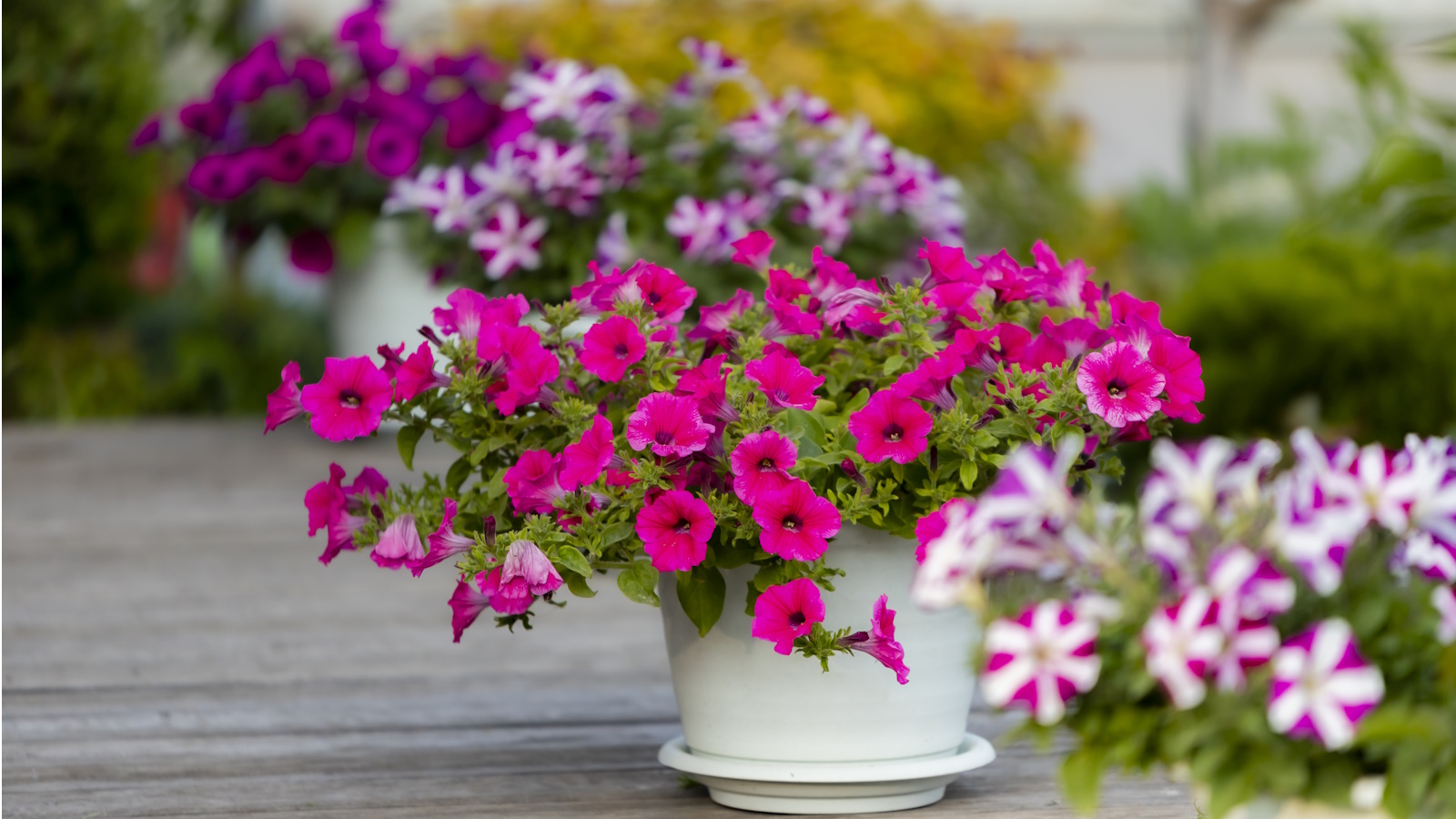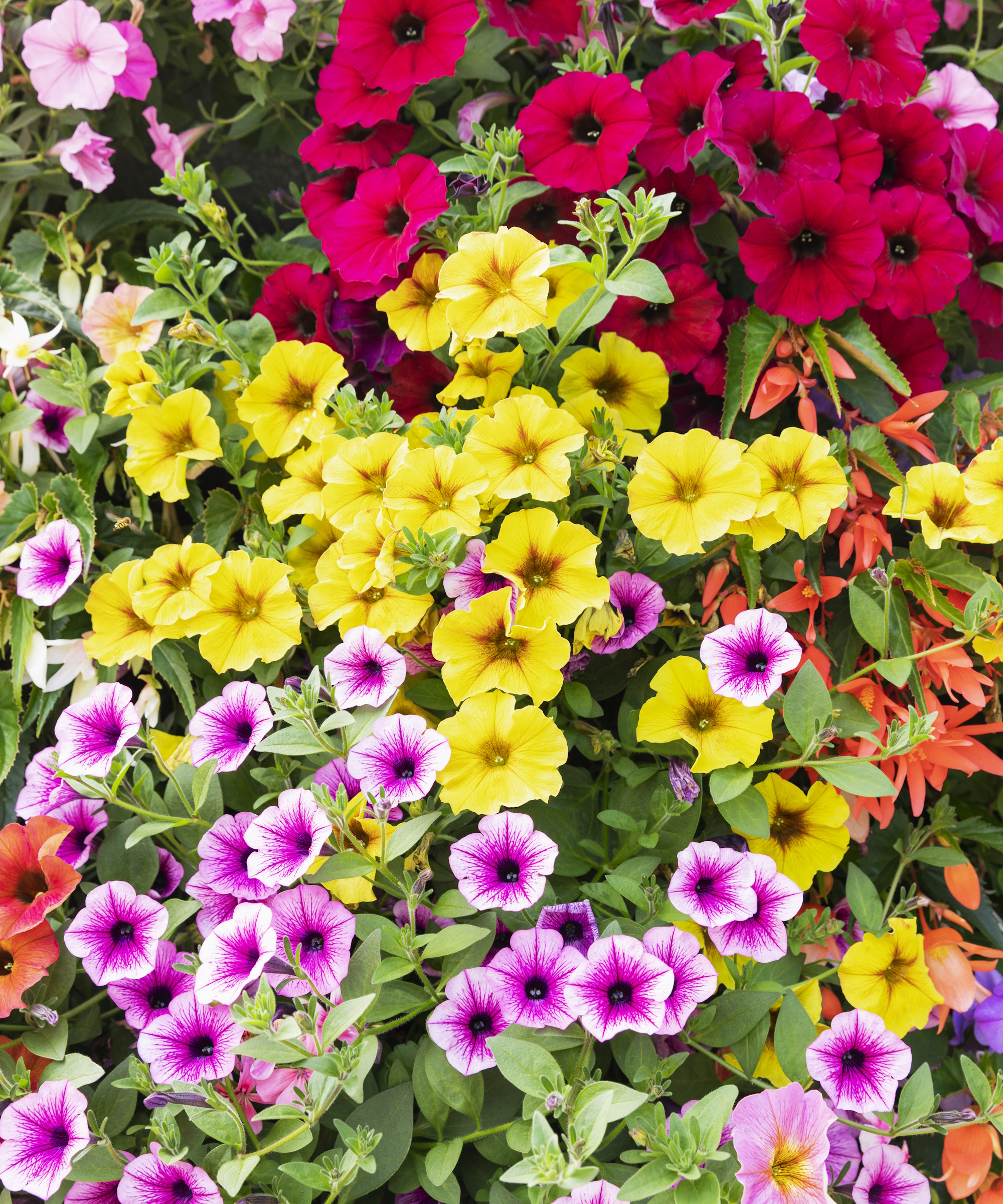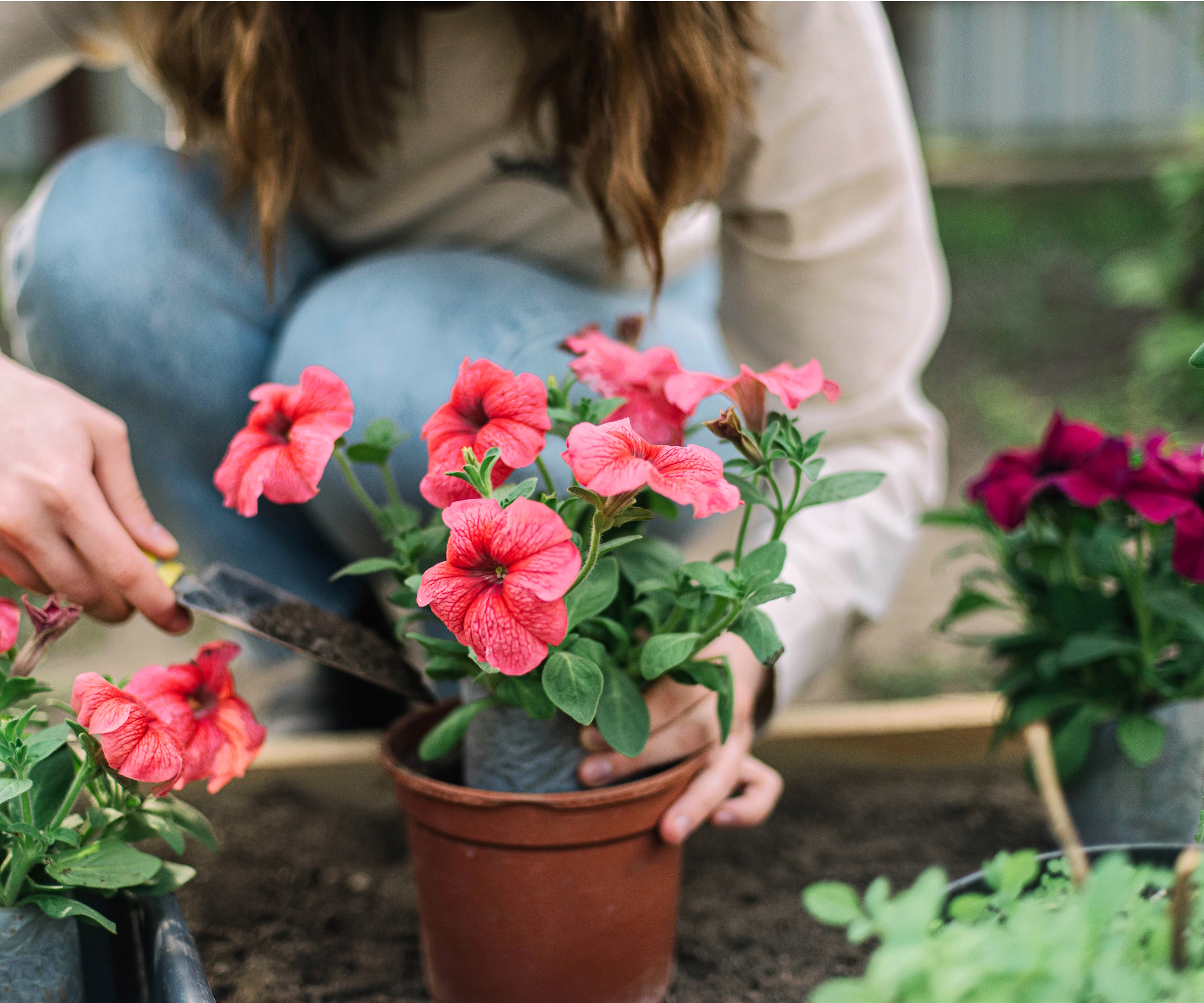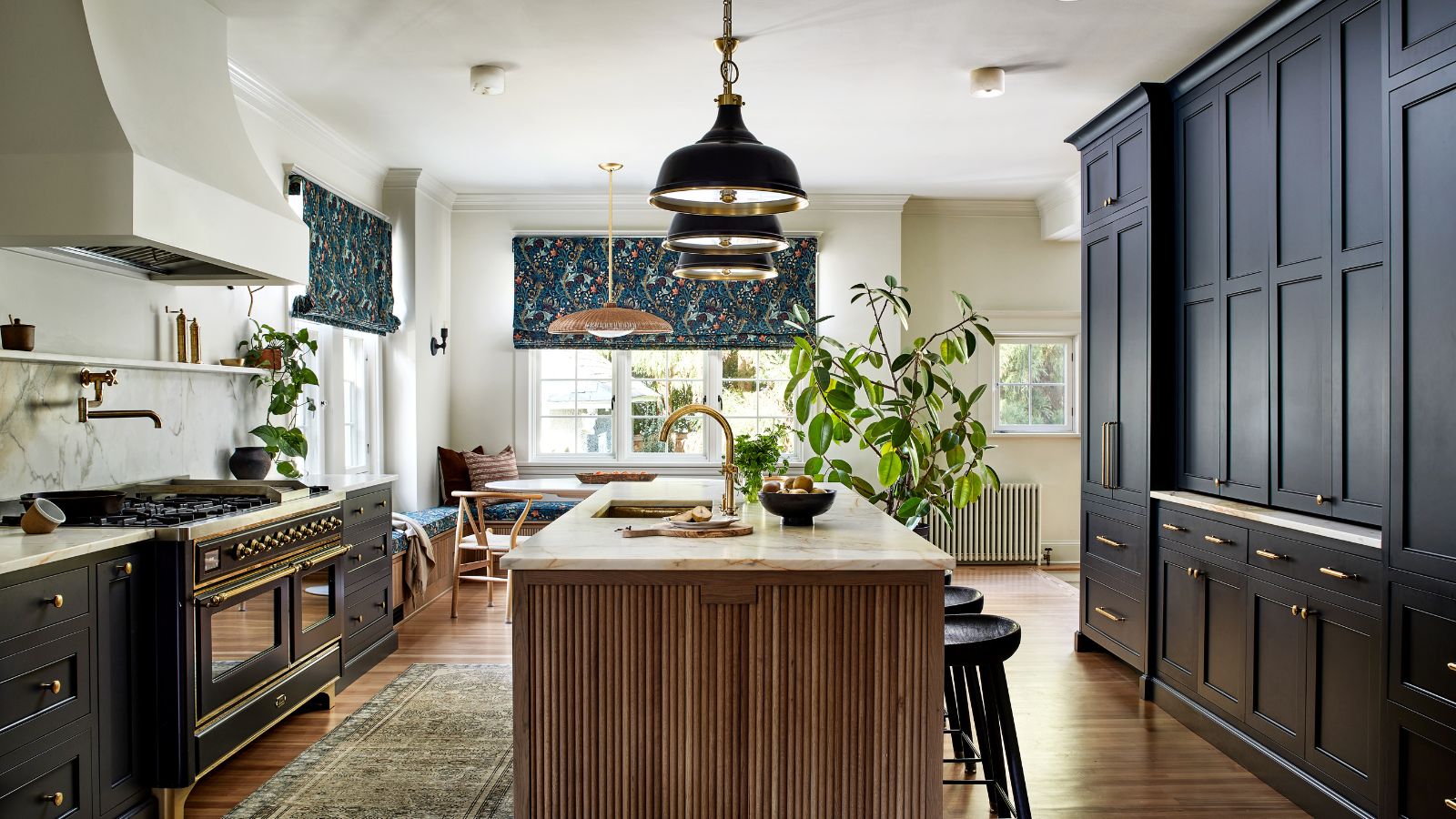How to grow petunias in pots – expert tips for a spectacular container display
Create a container garden bursting with color by growing these long-lasting blooms


Growing flowers in pots is a great way to uplift your container display and corners of your patio. Petunias are among some of the easiest flowering plants to grow in pots, guaranteed to create a vibrant display bursting with blooms.
Petunias flower from spring through to fall and make for some of the best fall flowers for pots. They're a great addition to container gardens if you want some bright pops of colors, as their beautiful clusters of flowers range from yellow to pink, purple and more.
We've spoken to experts to find out how to grow petunias in pots successfully for a spectacular long-lasting display.

How to grow petunias in pots
Growing petunias in pots is easy and quick to do. By following just a few simple steps, you'll have a bright container in no time. Experts told us how to best grow petunias in pots for a successful display.
Where to grow petunias in pots

Before getting started with growing petunias in pots, it's a good idea to identify where to position them. In their native habitats of South America, these charming blooms are familiar with sunny spots.
'Petunias love the sun, so the pot should be positioned in a sunny spot in the garden. At the very least, choose a spot that gets morning sun,' says Annette Hird, expert gardener at Easy Urban Gardens.
Keeping your flowers in a sunny spot will also keep petunias blooming for longer. 'Otherwise, the plants will develop smaller leaves and struggle to bloom,' notes Nastya Vasylchyshyna, botany expert at Plantum.
You can also grow petunias indoors in pots, where experts recommend choosing a well-lit windowsill. 'You’ll need to protect the plant from direct afternoon sunlight. Intense sun can burn the leaves and cause the flowers to wilt faster,' Nastya notes.

Annette Hird has an Associate Diploma in Horticulture and is an urban gardening expert. She has worked as a professional propagator and managed, maintained and improved many urban and rural gardens. She also enjoys growing her own fruit, vegetables, herbs and flowers as well as many different types of ornamental plants.

Nastya Vasylchyshyna is a professional botany expert for the Plantum app that helps identify plants and plant diseases and provides care recommendations. For 4 years she has consulted on botany-related topics for Plantum. Her specialization is plant morphology, phytopathology, and plant physiology.
How to grow petunias in pots

It's easy to grow petunias from seed, like with these mixed petunia seeds from Amazon, and it might be best to first sow seeds indoors to start them off. The best time to sow petunia seeds indoors is late winter or early spring, ready to transplant outdoors as the weather warms up.
'A great alternative to the seed method is buying petunia seedlings from a garden center. This will allow you to enjoy blooming much faster than if you were to grow the plants from seeds,' says Nastya.
After a couple of months, your petunia seedlings will be ready to plant out and it's important to choose a container that will drain well, like this terracotta planter with a drainage hole and saucer from Amazon.
'Any type of pot will work but these do really well in hanging pots,' says Annette. 'I have some growing in a concrete pot right now but you can use plastic pots or terracotta pots. The only important thing to remember is that the pot should have drainage holes,' she adds.
Petunias have a trailing habit that makes them a great plant for hanging baskets. So long as your container has drainage holes, your petunias shouldn't become oversaturated and will stay happy. You might also want to opt for this well-draining planting mix from Perfect Plants Nursery.
Once your petunias are potted up, you need to keep them at a consistent moisture level. 'Petunias are moisture-loving plants, so you should water them once the top soil dries out,' says Nastya.
Knowing how to water plants correctly and when to water plants can be the trick to keeping them thriving for longer. 'In pots soil can dry out pretty quickly, especially in summer. That’s why you may need to water the plant frequently, up to every 2–3 days,' she adds.
Using a moisture meter, like this soil moisture meter from Amazon, can help you identify when your petunias need watering.
FAQs
Should you fertilize petunias?
Fertilizing petunias can be a good way to encourage new blooms during their active growth season in spring and summer.
'Petunias need a lot of nutrients to produce new leaves and bloom. To help them, feed them with a complex mineral fertilizer for flowering plants every 2–3 weeks while they're growing, says Nastya Vasylchyshyna, botany expert at Plantum.
Petunias are easy flowers to grow in pots for a colorful display. In just a few simple steps, you can brighten up your containers with these long-lasting blooms. Make sure to also get to grips with deadheading petunias for returning flowers next year.
Sign up to the Homes & Gardens newsletter
Design expertise in your inbox – from inspiring decorating ideas and beautiful celebrity homes to practical gardening advice and shopping round-ups.

Tenielle is a Gardens News Writer at Homes & Gardens. She holds a qualification in MA Magazine Journalism and has over six years of journalistic experience. Before coming to Homes & Gardens, Tenielle was in the editorial department at the Royal Horticultural Society and worked on The Garden magazine. As our in-house houseplant expert, Tenielle writes on a range of solutions to houseplant problems, as well as other 'how to' guides, inspiring garden projects, and the latest gardening news. When she isn't writing, Tenielle can be found propagating her ever-growing collection of indoor plants, helping others overcome common houseplant pests and diseases, volunteering at a local gardening club, and attending gardening workshops, like a composting masterclass.
-
 Martha Stewart's intelligent cabinets 'take every inch into consideration' – their 'visually light' style will solve your small kitchen storage problems
Martha Stewart's intelligent cabinets 'take every inch into consideration' – their 'visually light' style will solve your small kitchen storage problems'Every kitchen can be beautiful and functional, no matter what the size': 9 years since sharing her clever storage, Martha's cabinets are just as beautiful
By Megan Slack Published
-
 This once-dated kitchen is now a timeless space with the coziest details – and its the classic color palette that's made it a chic, welcoming space
This once-dated kitchen is now a timeless space with the coziest details – and its the classic color palette that's made it a chic, welcoming spaceWarming colors and natural materials combine to create this enduringly classic kitchen scheme
By Molly Malsom Published